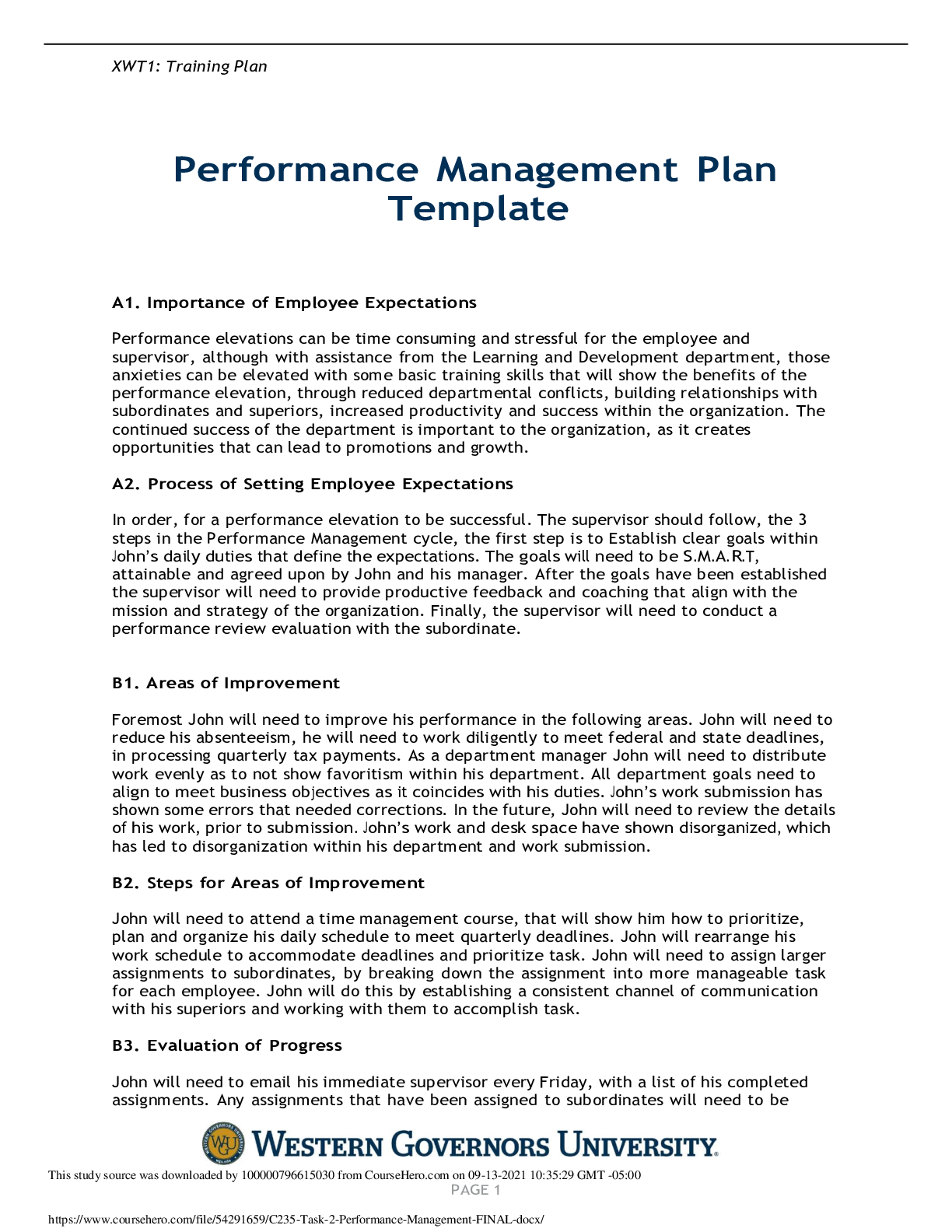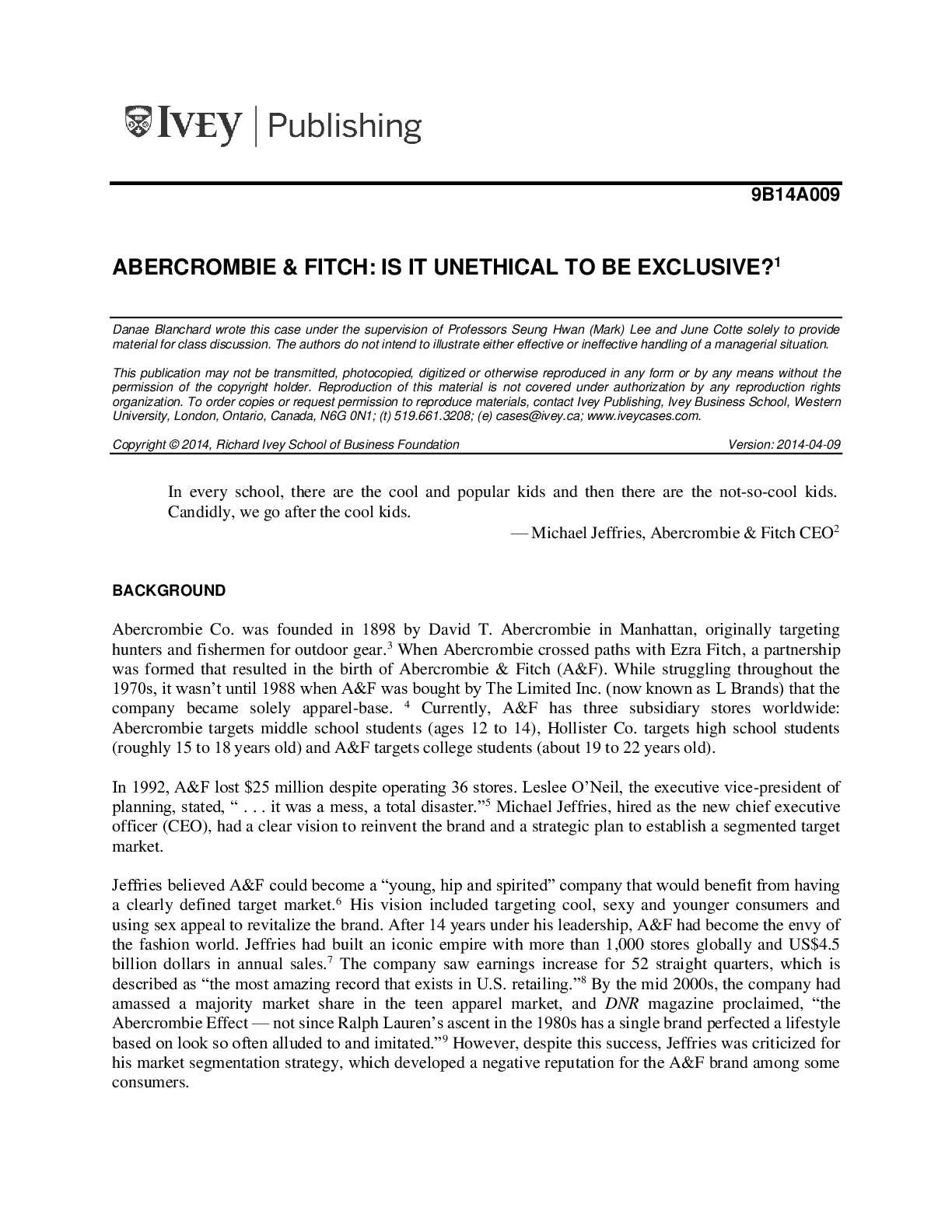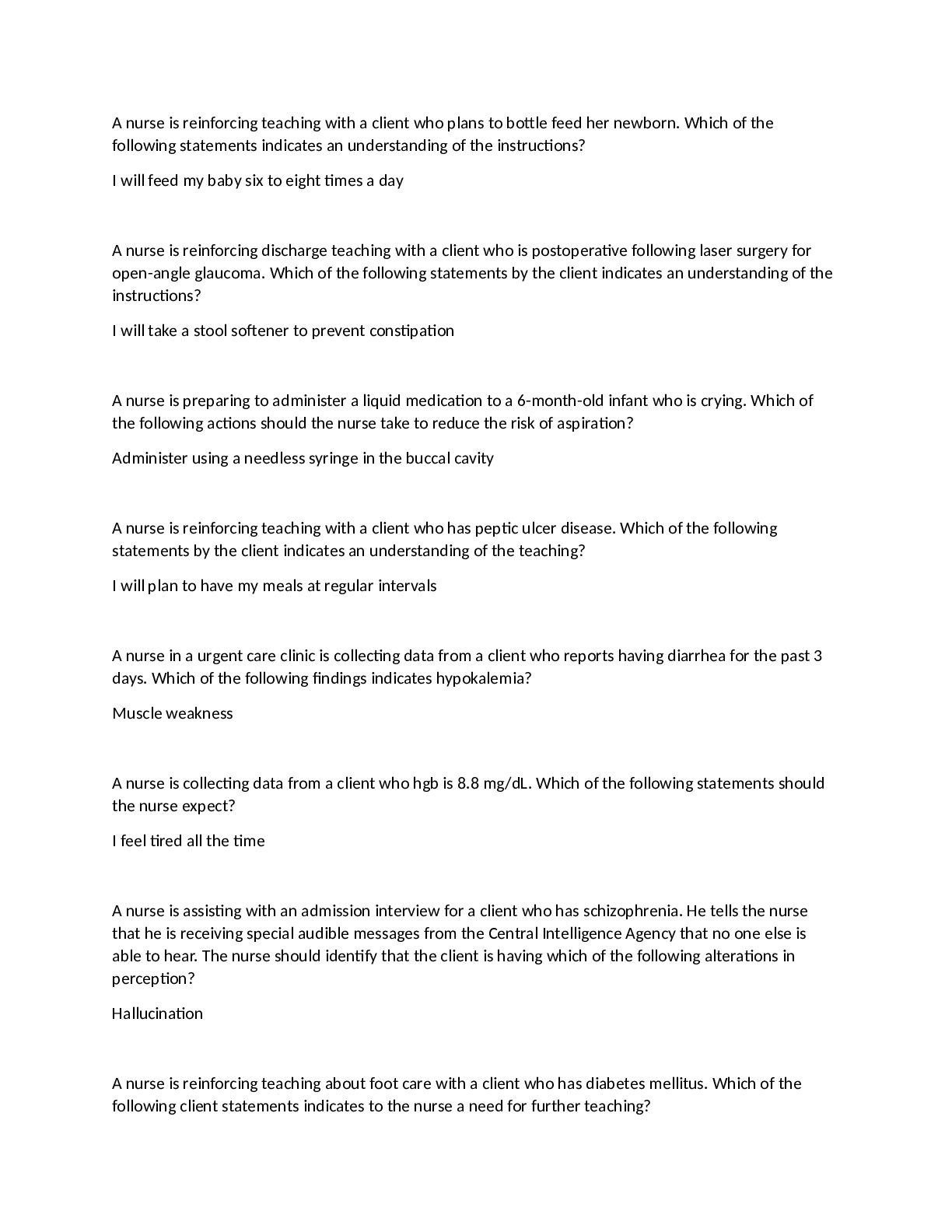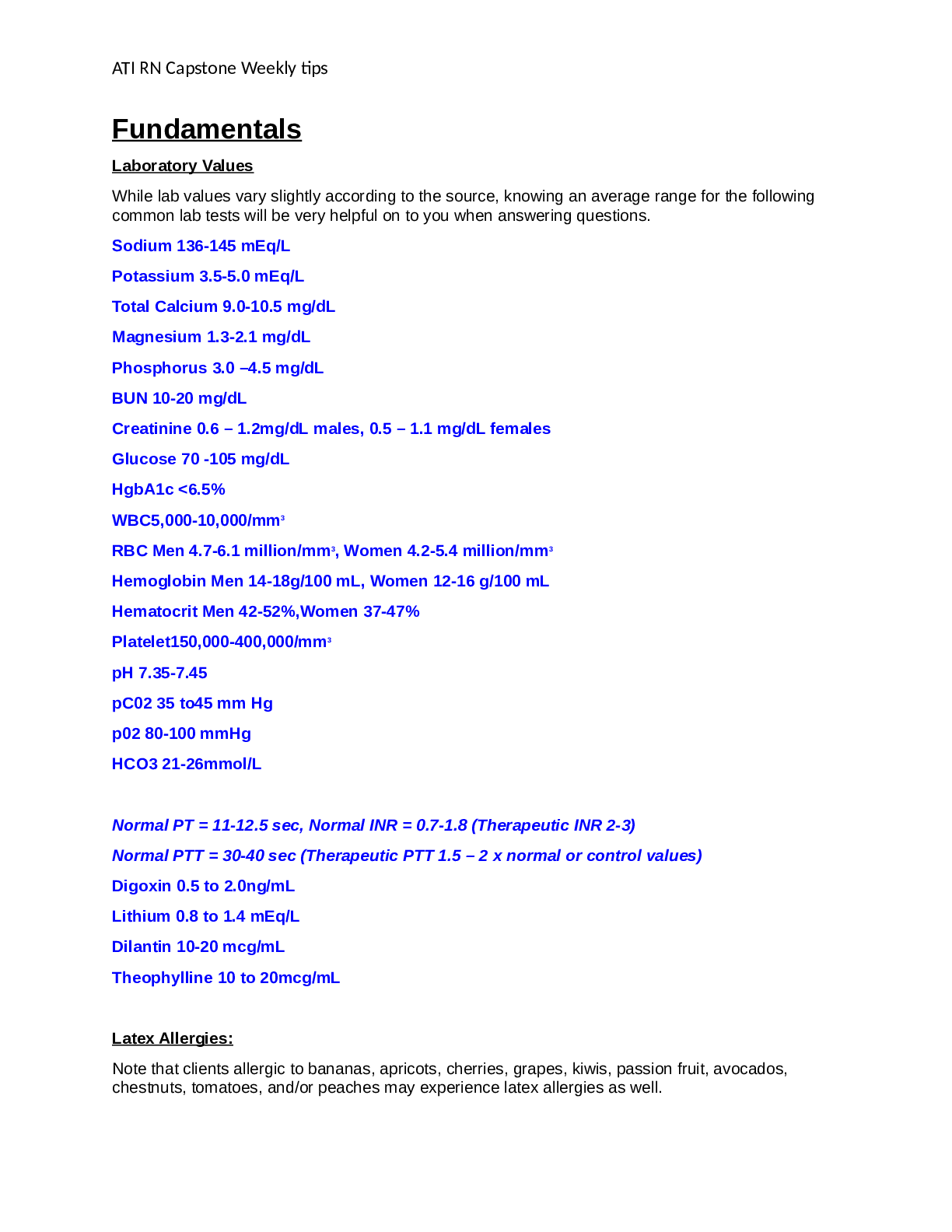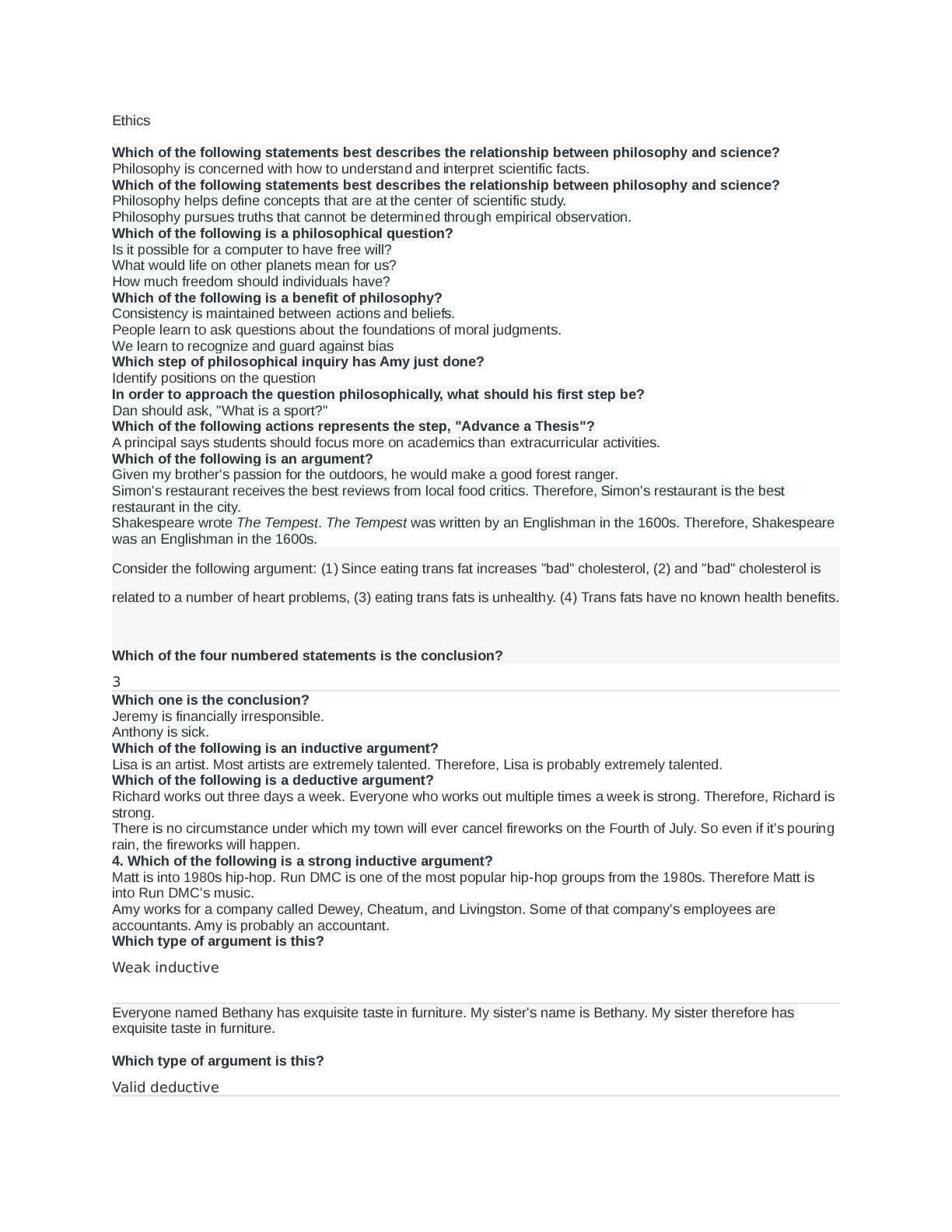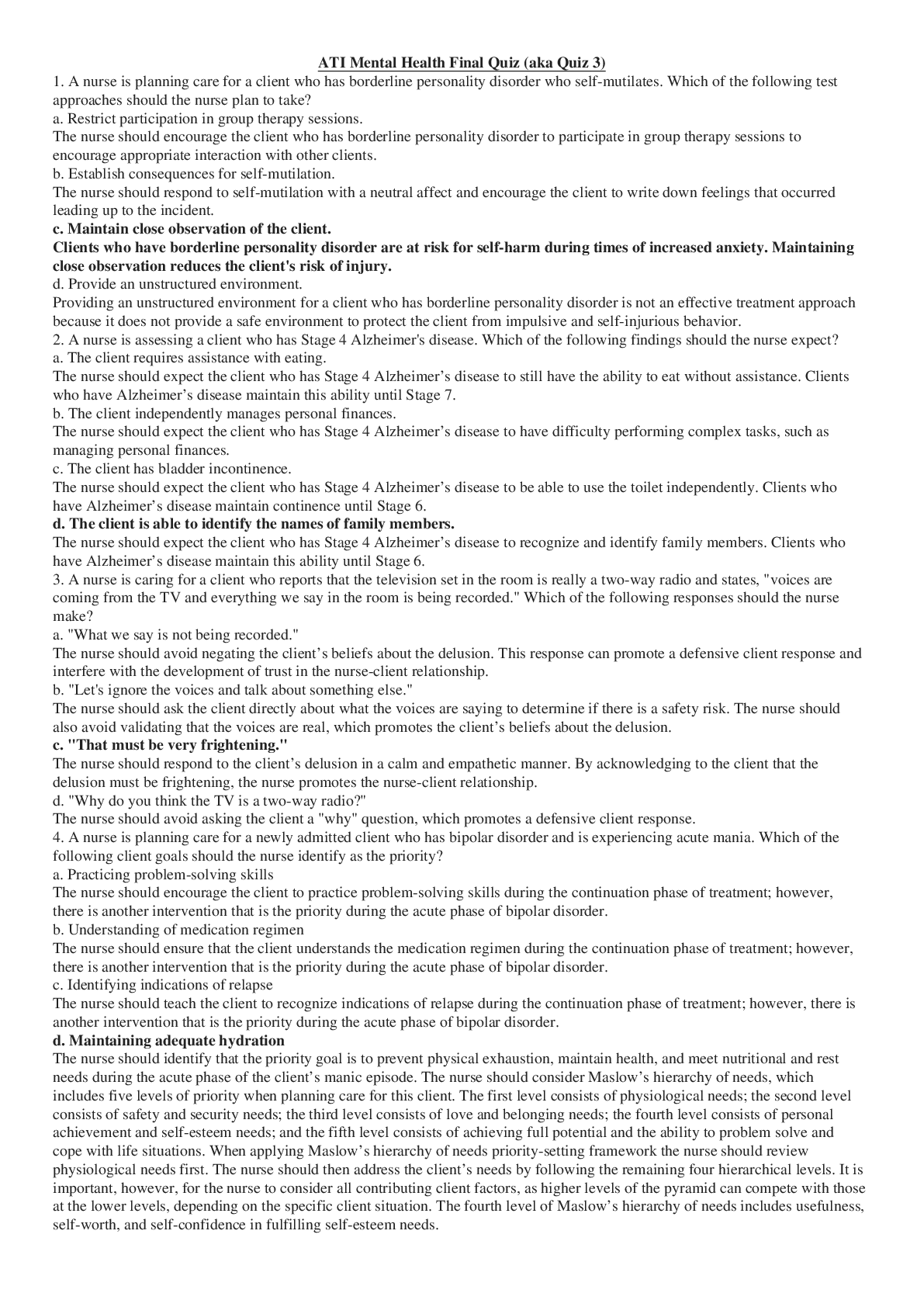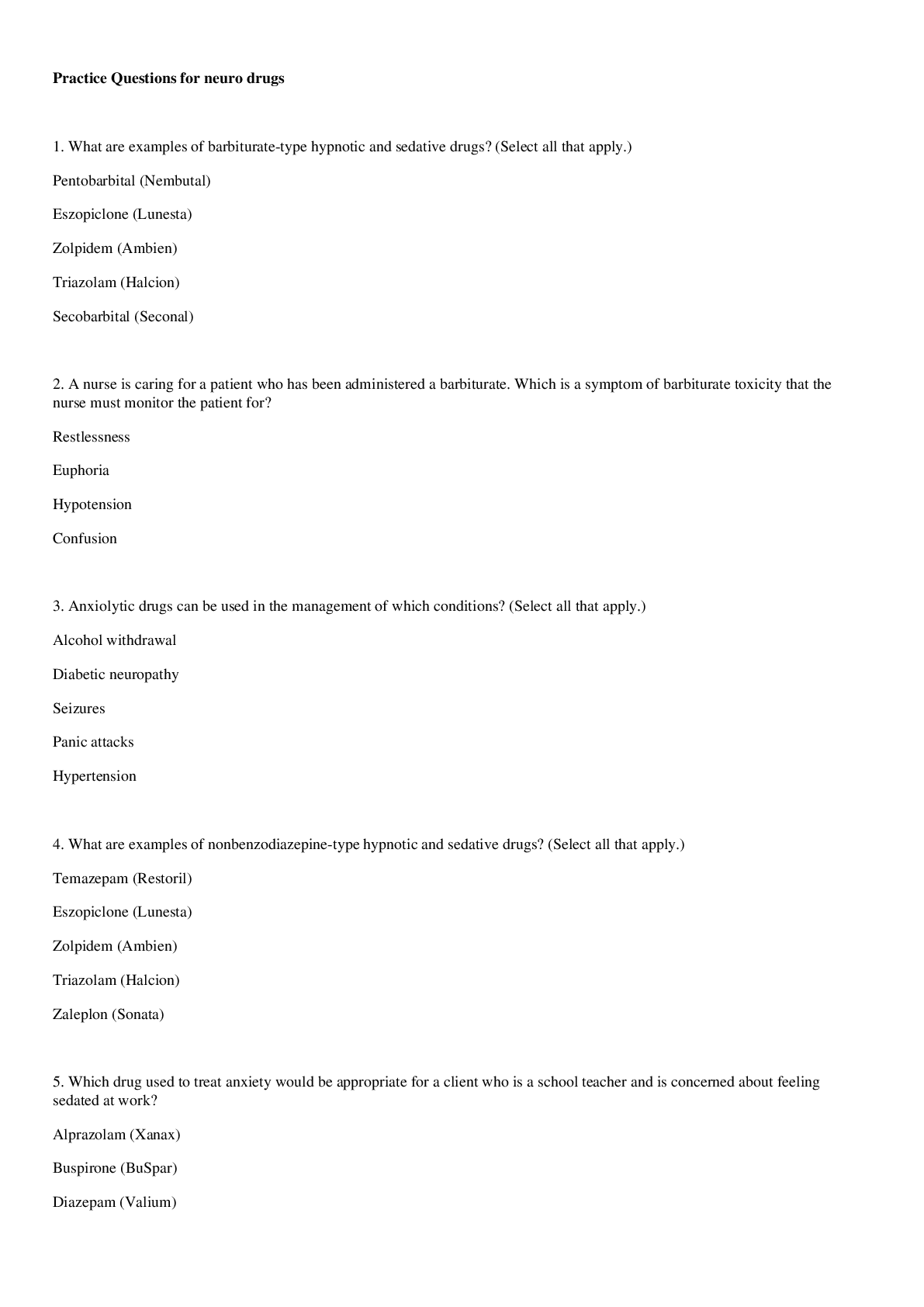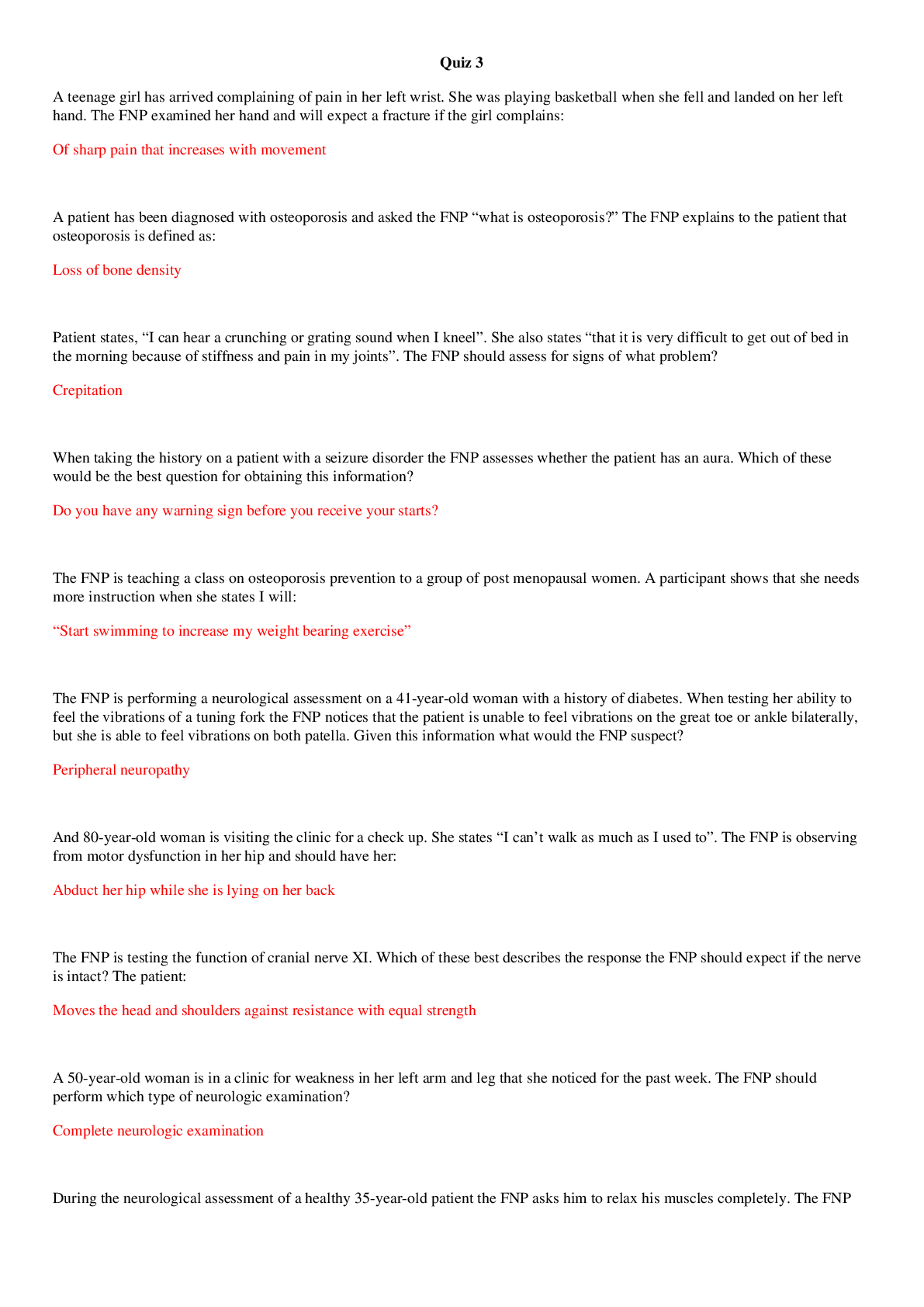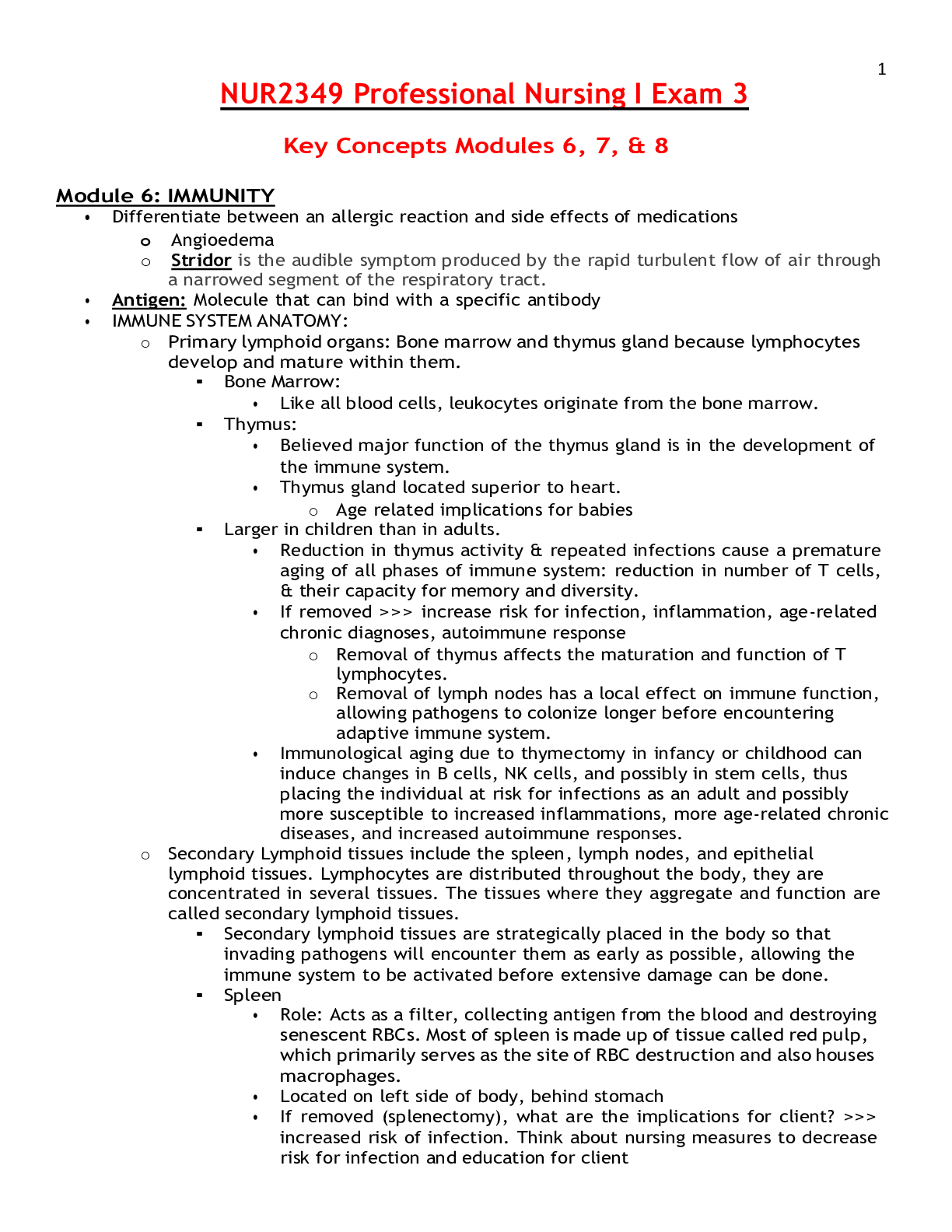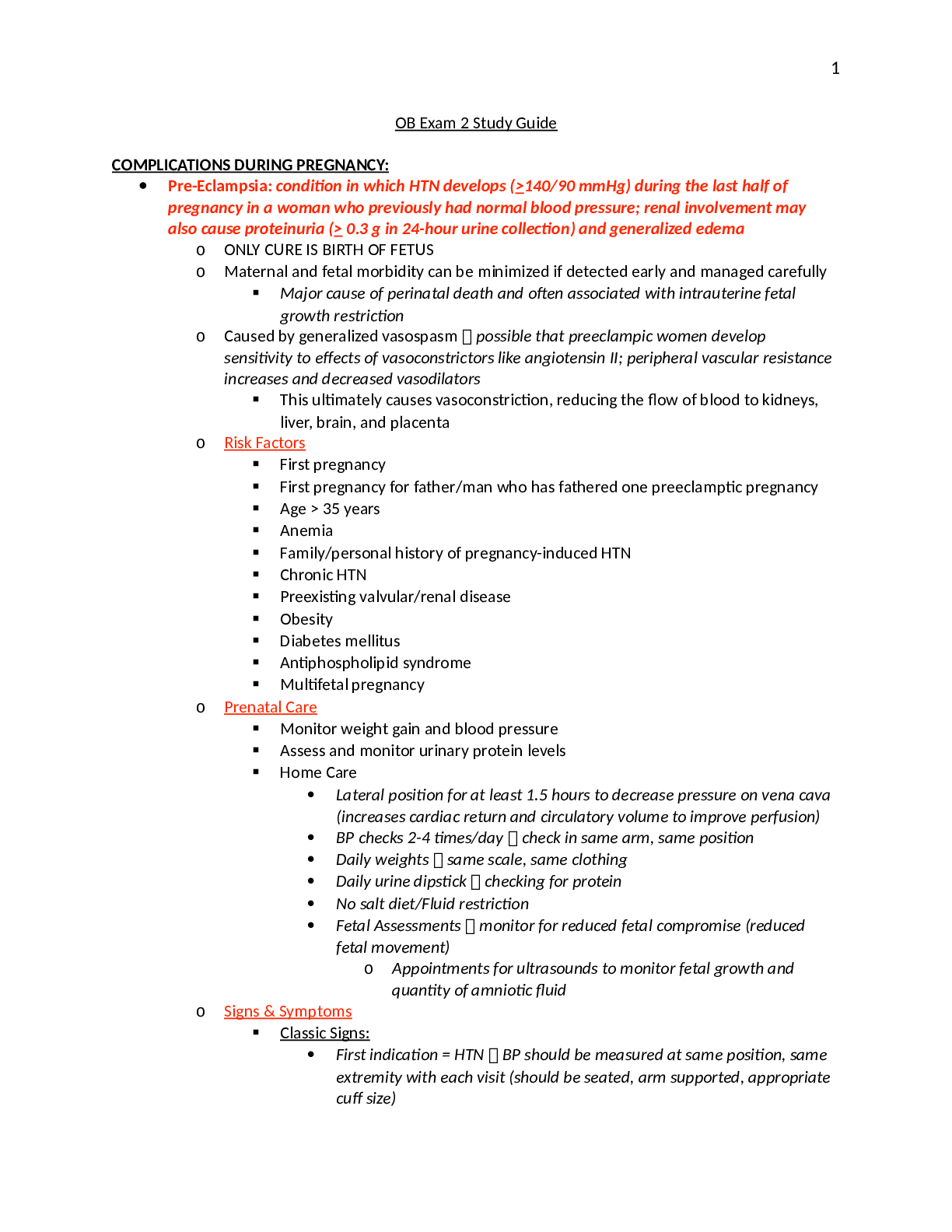*NURSING > STUDY GUIDE > Med Surg Exam 3 Complete study guide|Galen College of Nursing - NUR 242 MS Exam 3 (All)
Med Surg Exam 3 Complete study guide|Galen College of Nursing - NUR 242 MS Exam 3
Document Content and Description Below
Med Surg Exam 3 Streb PP Chapter 7 Chapter 54: Care of Patients with Esophageal Problems, pp. 1087-1092 Gastroesophageal Reflux Disease (GERD) Risk factors include consumption of foods such as ... caffeine, alcohol, spicy or fried foods, chocolate, and tomatoes. Lifestyle factors play a big part especially alcohol and smoking. The nursing assessment should include asking about a history of heartburn or atypical chest pain associated with the reflux of GI contents. GERD manifest differently depending on the patient and the severity of the disorder. Heartburn, dyspepsia, is the most common symptom and may be described as substernal burning moving up and down the chest. Pain usually develops within 30-60 minutes after meals. Severe heartburn pain can radiate to the neck, jaw, or back and patients may think they are having an MI. GERD symptoms are exacerbated when lying down flat or bending over. Regurgitation may lead to aspiration or bronchitis. These patients are at risk of aspirating when lying flat. Symptoms of GERD include coughing or wheezing at night, dysphagia, belching and nausea, hoarseness, and insomnia. Assess lungs for the presence of crackles. Chapter 52: Assessment of the Gastrointestinal System, pp. 1092-1095 Hiatal Hernias (diaphragmatic hernias) A condition where a part of the stomach that normally is in the abdominal cavity protrudes through the esophageal hiatus to rest within the chest cavity. Symptoms usually are worse after meals. These symptoms may be made worse when lying flat and may resolve with sitting up or walking. Patient should immediately report abdominal pain with nausea, vomiting, and fever. Lifestyle changes may include elevating the head of the bed when sleeping to allow gravity to prevent acid from refluxing into the esophagus and remaining upright after meals. Small frequent meals may help instead of eating two or three larger meals a day. Avoid vigorous movement after meals. Some foods that should be avoided include spicy, greasy foods, onions, tomatoes and citrus fruits, however, most individuals are generally aware of the foods that trigger heartburn symptoms and avoid them. Chapter 54, Care of Patients with Esophageal Problems, pp. 1089 Esophagogastroduodenoscopy (EGD) An esophagogastroduodenoscopy (EGD), which is also known as an upper endoscopy or upper gastrointestinal endoscopy, is a diagnostic procedure that is performed to view the esophagus, stomach, and duodenum (part of the small intestine). In an EGD, the doctor uses an endoscope, a flexible, tube-like, telescopic instrument with a tiny camera mounted at its tip, to examine images of the upper digestive tract displayed on a monitor in the examination room. Small instruments may also be passed through the tube to treat certain disorders or to perform biopsies (remove small samples of tissue). Certain medications (such as aspirin, anticoagulants and the anti-inflammatory drugs called NSAIDs) should be discontinued at least five to seven days before an EGD to reduce the risk of bleeding. NPO - Patients will be asked not to eat or drink anything for at least 8 hours before the procedure to ensure that the upper intestinal tract will be empty. Before the procedure, patients may be given a moderate sedative and/or pain medication, usually by intravenous injection. Monitor gag reflex, the sedation will block the gag reflex to prevent aspiration. Keep NPO until they get their gag reflex back. (1 to 2 hours before the anesthetic is out the system). Patient must have someone accompany them home after recovery. Chapter 55: Care of Patients with Stomach Disorders, pp. 1103-1107 Gastritis Gastritis occurs when the lining of the stomach known as the mucosa becomes inflamed or swollen. When the stomach mucosa becomes inflamed edema, hemorrhage and erosion of the mucosa occur. Medical treatment for gastritis depends on the specific cause. Patients will be instructed to stop taking irritating medications such as ASA and NSAIDS. Medications to decrease the amount of hydrochloric acid in the stomach are usually prescribed. These would include Antacids, H2 antagonists, and Proton pump inhibitors. The patient with gastritis is at risk for deficient fluid volume. A nursing priority is to access for the patient’s hydration status. This would include I&O, daily weights, & VS. Chapter 55: Care of Patients with Stomach Disorders, pp. 1107-1115 Peptic Ulcer Disease (PUD) Peptic ulcers are a break in the mucous lining of gastrointestinal tract from continued contact with gastric juice. This results in inflammation. Pain that is worsened by the ingestion of food. Ulcers in the mucosa of GI tract occur from several different causes. Duodenal ulcers are associated with a H. pylori infection. Gastric ulcers may cause a dull, aching pain, often right after a meal; eating does not relieve the pain and may even worsen it. Pain may also occur at late at night. Other symptoms associated with PUD are nausea with or without vomiting, weight loss, anorexia, belching and dyspepsia or indigestion. Patient may report a distended abdomen that is painful. Smoking contributes to the pathogenesis of peptic ulcer disease. Smoking causes an acceleration of gastric emptying of liquids, promotes of duodenogastric reflux and causes a reduction in mucosal blood flow. Patient should attend a smoking cessation course. Chapter 55, Care of Patients with Stomach Disorders, pp. 1116-1119 Gastric Cancer Stomach cancers tend to develop slowly over many years. Before a true cancer develops, pre-cancerous changes often occur in the inner lining (mucosa) of the stomach. These early changes rarely cause symptoms and therefore often go undetected. The decline of stomach cancer has been linked to the frequent use of antibiotics to treat infections. Antibiotics can kill the bacteria called Helicobacter pylori (H. pylori), which is thought to be a major cause of stomach cancer. Administer protein and vitamin supplements to foster wound repair and tissue building. Eat small, frequent meals rather than three large meals. Reduce fluids with meals but take them between meals. Stress the importance of long-term vitamin B12 injections after gastrectomy to prevent surgically induced pernicious anemia. [Show More]
Last updated: 1 year ago
Preview 1 out of 23 pages
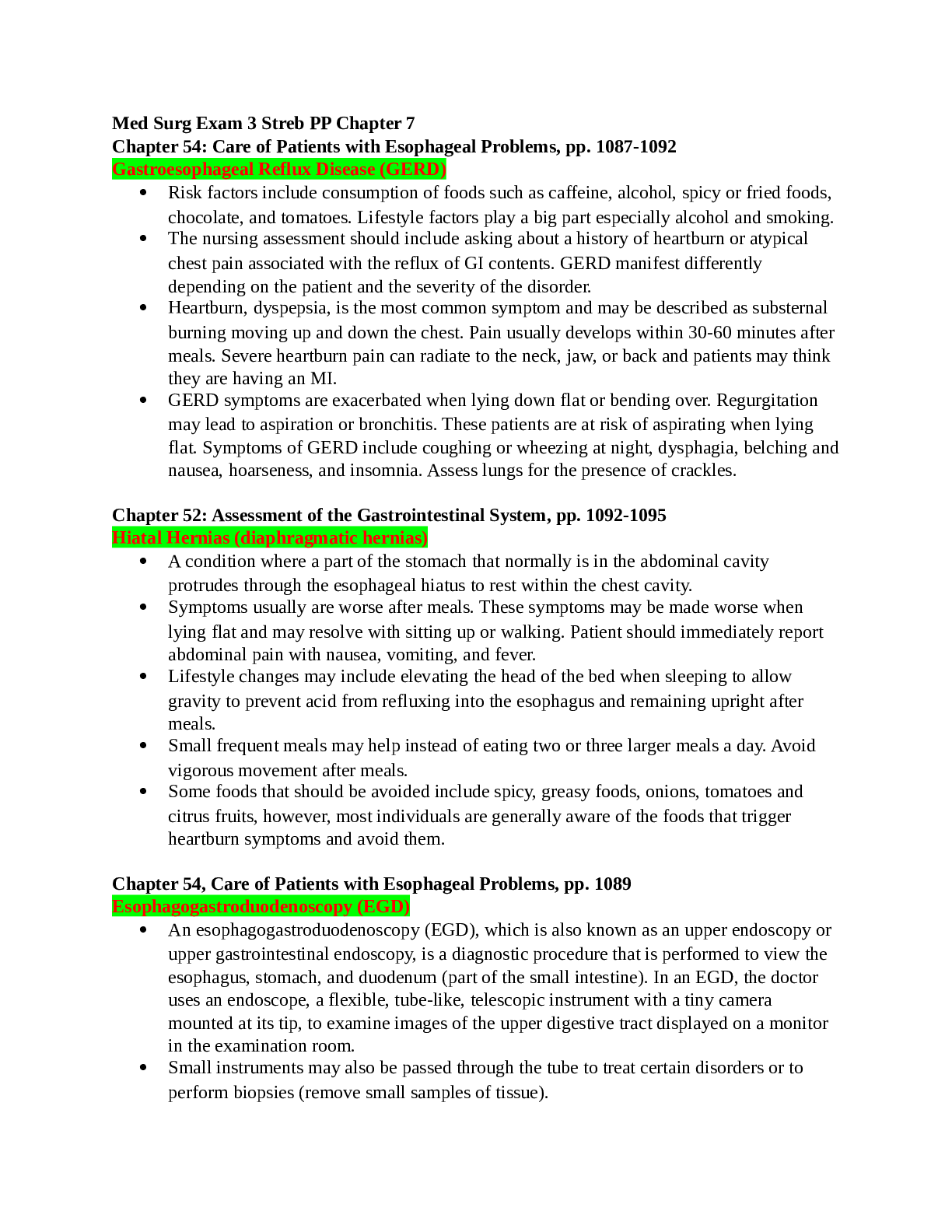
Reviews( 0 )
Document information
Connected school, study & course
About the document
Uploaded On
Jun 07, 2022
Number of pages
23
Written in
Additional information
This document has been written for:
Uploaded
Jun 07, 2022
Downloads
0
Views
43

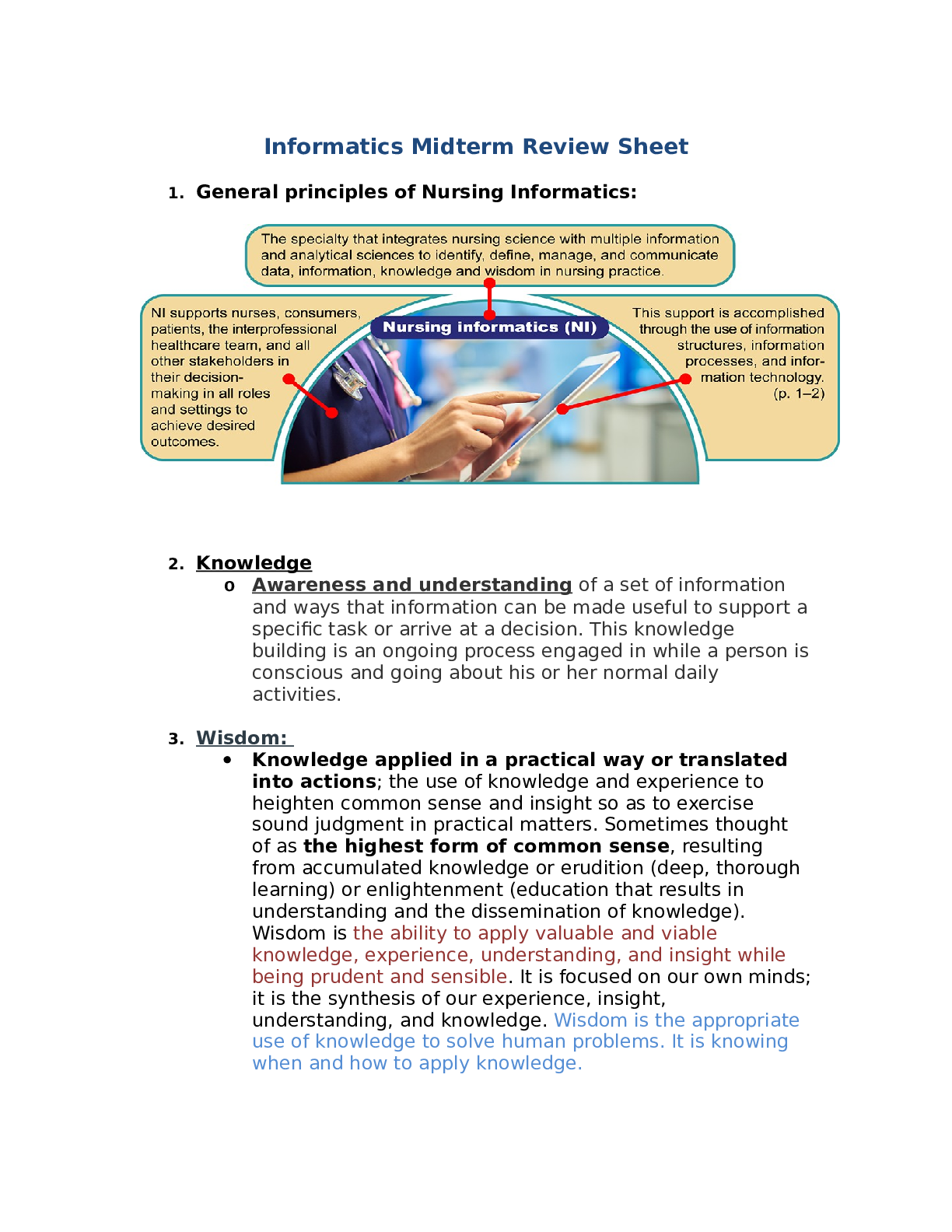
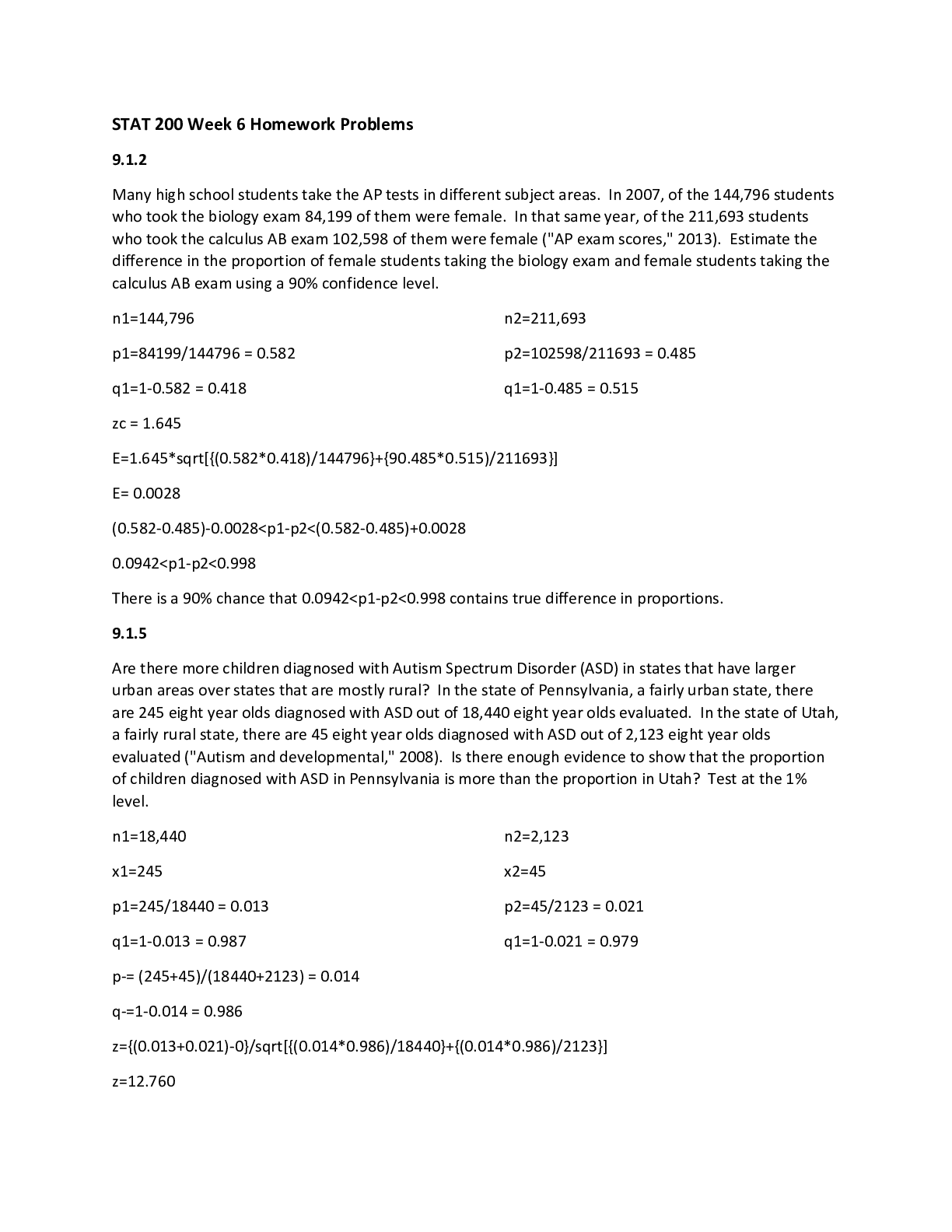
 (1).png)

